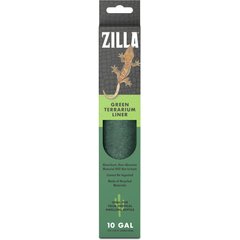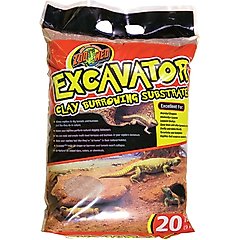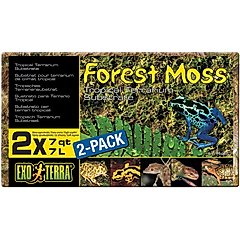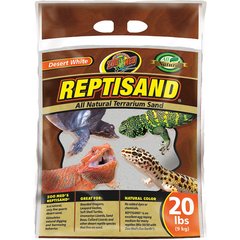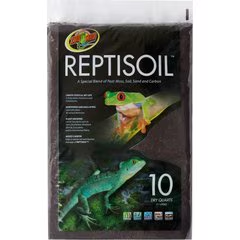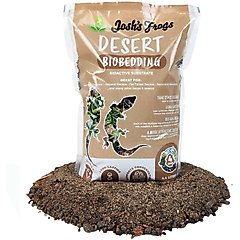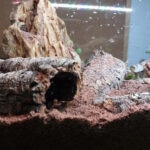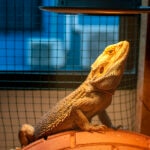What Is the Best Substrate for Bearded Dragons?
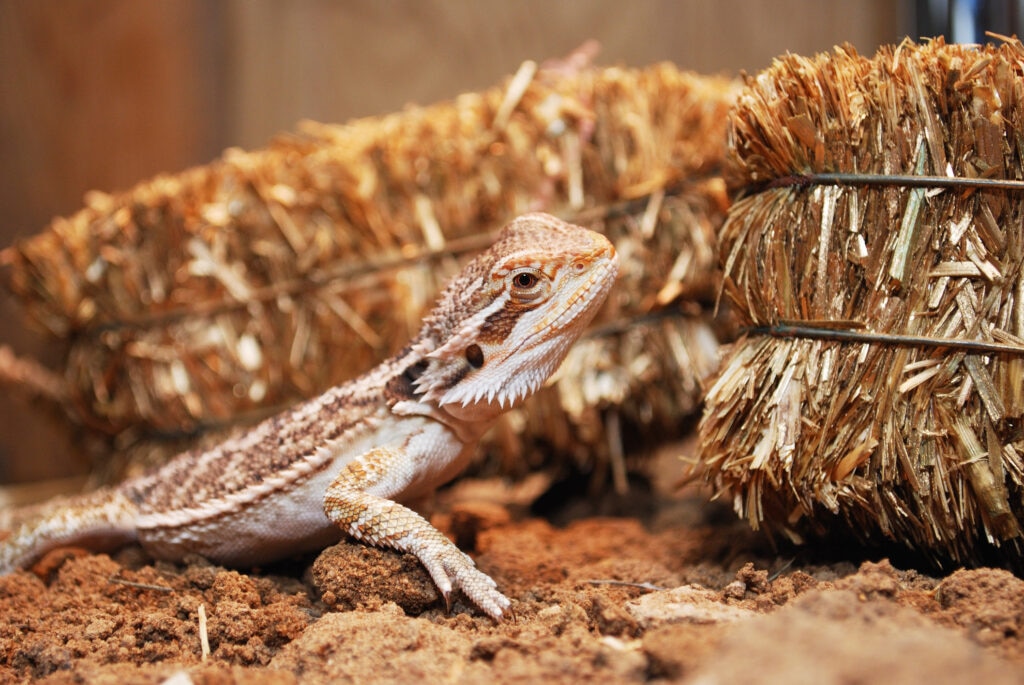
Photo by smileitsmccheeze/iStock/Getty Images Plus
Bearded dragons come from the arid deserts of Australia, where the ground is dry, loose, and full of textures to explore. Choosing the right substrate for their enclosure can help them feel at home, encourage natural behaviors like digging, and support their overall health.
Let’s dig into the best (and worst) substrates for your dragon—whether you’re setting up a simple tank or building a full bioactive habitat.
Key Takeaways
- A purely flat, hard surface limits enrichment opportunities but is helpful with babies, new dragons, and sick dragons.
- Several years on a hard substrate may cause toe deformities in bearded dragons.
- Bioactive enclosures are more work to set up but offer more enrichment opportunities.
- Play sand and organic topsoil can make a great substrate mixture.
Choosing a Bearded Dragon Substrate
Whether you choose a solid substrate, sand and soil mixture, or a bioactive substrate, there are key differences to consider.
Some bearded dragons may have a preference, but most aren’t too particular about the type of substrate. However, your choice can impact enclosure maintenance and your bearded dragon’s long-term health and wellness.
Solid Substrate for Bearded Dragons
Solid substrates provide a hard surface for your bearded dragon. This can make cleaning easier and is useful when a health concern requires observation.
Solid substrates are also helpful when you bring home a new animal and need to quarantine them to make sure they’re healthy before you put your new scaly pal into their enclosure.
Greg Sieglinger of Green Mountain Serpents in White River Junction, Vermont says he uses paper towels as substrate for beardie hatchlings because it’s easier to keep clean. He moves them into a bioactive enclosure when they are around 3 months old.
Austin Guinn of Scorchin’ Scalies, LLC, a bearded dragon breeder in the Atlanta area, feels that hard surfaces are often safer for hatchlings.
“I have personally dealt with a handful of babies who became impacted due to either accidentally consuming a portion of the loose substrate or bugs that are too large,” Guinn says. “It is not fun for anyone involved and could result in your baby needing surgery.”
Impactions are blockages in the reptile’s digestive tract, which are caused by ingesting something that is not digestible—including substrate. The condition can be life-threatening, and if you suspect your reptile may have an impaction, call your veterinarian immediately.
Whether or not you plan to use a bioactive substrate later, solid surfaces can give your bearded dragon a safe and healthy start. These surfaces include:
- Paper towels
- Substrate mats, like the Zilla Terrarium Liner
- Newspaper
Recommended Product
Bearded Dragon Sand and Dirt
Bearded dragons encounter sand and dirt blends in their natural environment, so using a substrate that mimics those conditions supports normal behavior.
Guinn explains that their dragons transition from hard surfaces into a mixture of sand, topsoil, and excavator clay as they approach adulthood at around 1–1.5 years old.
“This creates a substrate they can dig in,” he says. “Great enrichment!”
While there are a few commercially available substrates safe for bearded dragons, you can also mix your own. Guinn uses a mix of 33% each of sand, topsoil, and excavator clay.
“I try my best to get the best prices on things like this—the hardware store is the way to go,” he says. “I have yet to find a reptile industry alternative to it.”
It’s important to remember that if you are using a loose substrate, feed your beardie in a dish or feeding tank. This helps to prevent any accidental ingestion of the substrate that can lead to an obstruction.
Good options for sand and dirt bearded dragon substrates include:
- Children’s play sand—well-sifted to ensure there aren’t large pieces
- Excavator clay, like Zoo Med Excavator Clay Burrowing Substrate
Recommended Product
- Topsoil—make sure it is reptile-safe and organic to avoid chemicals
- Premixed sand and soil mixtures
- Sphagnum moss, like Exo Terra Forest Moss—used in place of soil by adjusting with a higher sand percentage
Recommended Product
- Pre-sifted reptile sand, like Zoo Med ReptiSand—to mix with topsoil
Recommended Products
Spot clean daily and remove any substrate that has fecal matter or food waste.
The substrate should be fully replaced and the enclosure deep-cleaned every three to six months. Replace sooner if there are any signs of mold or moisture or if your beardie is experiencing any parasite or illness.
What Is Bioactive Substrate for Bearded Dragons?
The soil mixture is similar to non-bioactive setups, but a bioactive habitat includes insects that clean up after your beardie and can include plants that help create a micro-ecosystem.
“I much prefer a bioactive substrate [like Josh’s Frogs BioBedding Desert Bioactive Reptile Substrate], as it is more natural for them. I like a mix of clean topsoil, sand, and excavator clay,” Sieglinger says.
Recommended Product
Bioactive habitats more closely mimic a wild environment and can support overall health and wellness by offering more chances to dig, explore, investigate scents, and even snack on live insects.
Because bearded dragons need a habitat with low humidity, Sieglinger says the clean-up crew should reflect that.
“To keep it clean, I prefer buffalo beetles (lesser mealworms), as they thrive in the arid environment,” he says.
As for plants, you can use anything safe for them to eat, like nasturtiums or echeveria. Succulents tend to do the best, Sieglinger says.
Setting up a bioactive habitat requires a few key components to keep the environment balanced:
- A soil mixture that holds the right amount of humidity for bearded dragons
- A clean-up crew of insects that consume waste and help keep the habitat healthy
- If you include plants, ensure they’re safe for bearded dragons to eat
Bearded Dragon Substrate Options To Avoid
With so many options available, choosing the right substrate for your bearded dragon’s enclosure can be challenging. While some products are marketed for all reptiles, they may not be safe for bearded dragons.
“Plain sand and, in particular, calcium sand should be avoided due to impaction risks,” says Sieglinger.
Other substrate options to avoid include:
- Coconut fiber, which can be used in place of topsoil, but it also causes impaction if ingested so it is best avoided
- Substrate with large pieces, as bearded dragons can accidentally eat them
- Bark, wood chips, gravel, and walnut shells, which can cause eye irritation, impaction, and bleeding in the GI tract
- Vinyl tiles, since they are slippery and aren’t ideal for beardies to walk on
Should You Put Water in a Bearded Dragon Tank?
Bearded dragons should always have access to clean drinking water in a dish large enough for them to soak in. Even though they are desert dwellers they will lose water naturally via skin evaporation and breathing. Water is replenished primarily through eating and drinking.
Beardies will drink water when they are dehydrated and often when they are soaking. If dehydration is noted, soaking your beardie for 10–20 minutes can help them rehydrate.
FAQs About Bearded Dragon Substrate
What should you put at the bottom of a bearded dragon tank?
If you use a loose substrate mix, fill the tank with at least 3 inches of it to allow your beardie to dig. Alternatively, paper towels, reptile carpets, and newspaper are easy to replace or clean.
What is the best soil mix for bearded dragons?
Whether you use bioactive or not, the best soil mix DIY for bearded dragons is a combination of excavator clay, sand, and topsoil.
Why is my bearded dragon digging in the sand at night?
Digging is normal behavior for bearded dragons! They dig burrows for shelter from summer heat, to find more humidity when they need to shed, and possibly for food.
